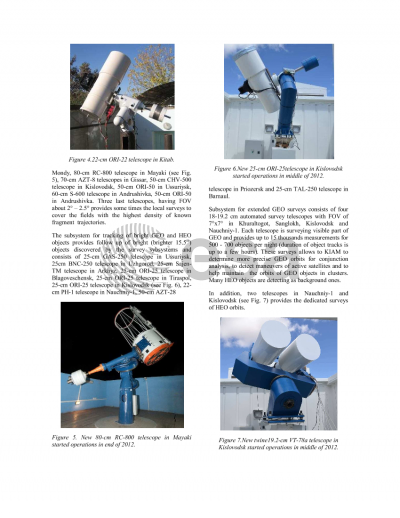Document details

Abstract
International Scientific Optical Network (ISON) represents one of largest systems specializing in observation of space objects. ISON project is continuously developing and is joining now the 33 observation facilities in 14 countries with 60 telescopes of different class (aperture from 12.5 cm to 2.6 m). 5.8 millions of measurements in 850 thousands of tracks are collected for about 3500 objects in 2012. The ISON observations are coordinated mainly by the Center on collection; processing and analysis of information on space debris (CCPAISD) developed and operated on the basis of the Ballistic Centre at the KIAM, Russian Academy of Sciences. The obtained results are used for KIAM orbital archive maintenance and conjunction analysis in interests of the Russian Mission Control Center and Reshetnev Company. Three ISON subsystems are already formed from telescope of different classes - for survey observations of bright objects at GEO-region, ephemerides observations of high-orbit faint fragments and ephemerides observations of bright GEO and HEO objects. One more subsystem for surveying the HEO-objects and extended GEO surveys is in development. Few series of dedicated telescopes with large FOV and automated mounts are elaborated and 40 items are produced for them. Observations of all automatic survey telescopes are centrally scheduled using dedicated planning software.
Preview







